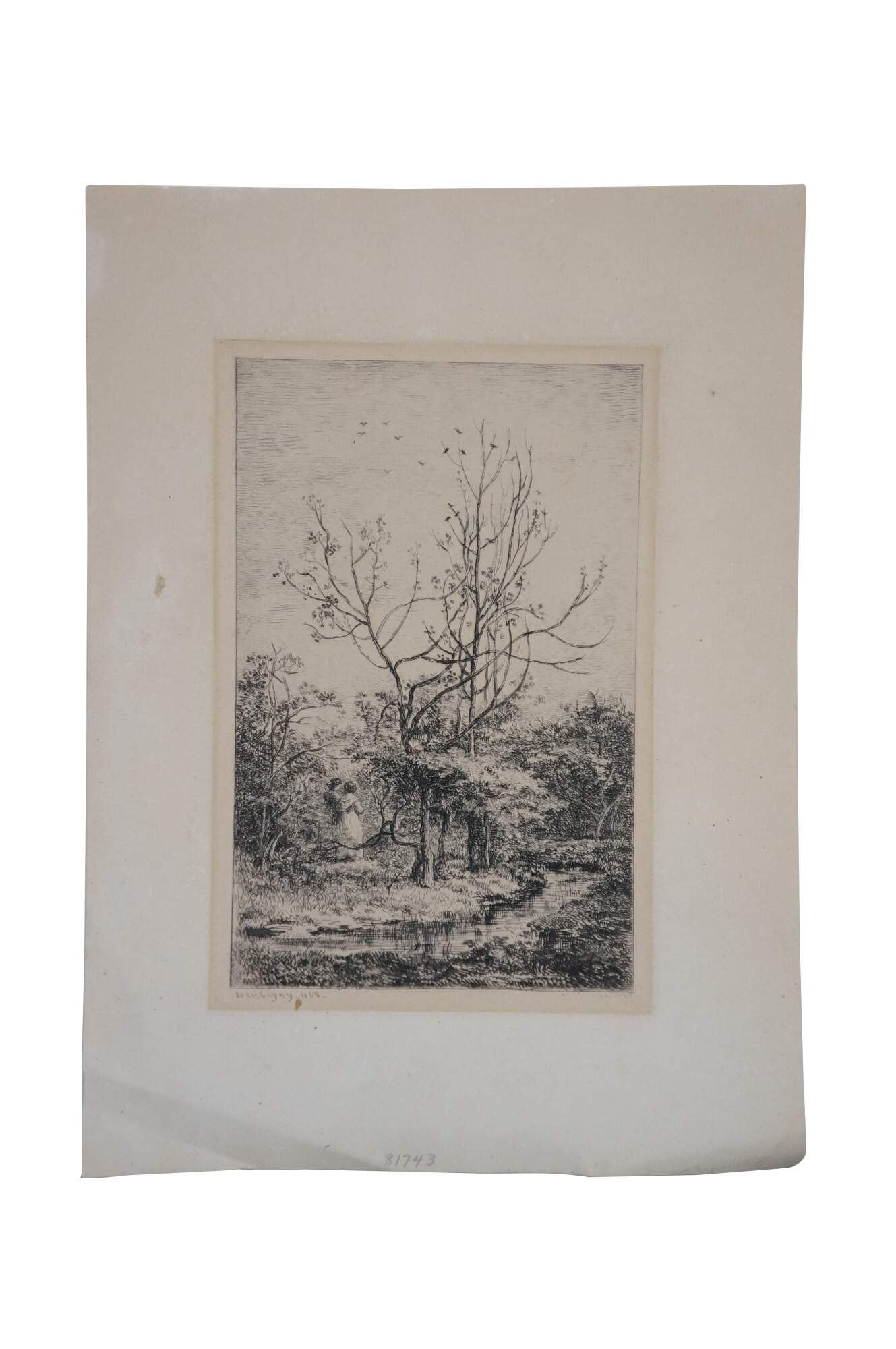
Shipping:
Free Shipping Included
Delivery:
Estimated 2-15 Business Days
Payments:
Credit Card, Check, Cash, PayPal, Apple Pay, Venmo
Returns:
30 Days 100% Money Back Guarantee, Buyer Pays Return Shipping
Description
Late 19th century black and white etching titled "The Orchard" by Charles Francois Daubigny. Landscape showing a pair of women walking through trees at the side of a creek. Signed in pate Daubigny 1868, lower left and right. Heavy paper/cardstock; unframed.
"Charles-Francois Daubigny was born in Paris on February 15, 1817. His father Edme, and his Uncle Pierre were painters of some reputation, so it is not surprising that Daubigny's interest in art was encouraged from an early age. Because he was a sickly child, Daubigny's parents arranged for him to live in the country in the small village of Valandmois. It was during these childhood years with the Bazots—his adopted family and lifelong friends—that Daubigny's love of the rural landscape began. Daubigny's earliest artistic experiences included the decoration of boxes and clocks and at the age of seventeen, restoring paintings at the Louvre under the direction of Francois Marius Granet. His training was largely informal; his studies in the well-respected atelier of the artist Pierre Sentie were interrupted by a year-long painting sojourn in Italy with his friend and fellow artist, Henri Mignan. In 1840, he spent a brief period under the tutelage of the academician Paul Delaroche. His earliest successes, as well as a means of financial support, were his etchings and illustrations. After winning his first Salon prize in 1848, the French government commissioned an etching from him after Claude Lorrain's Abreuvoir. Daubigny's first love, however, was landscape painting, and his fascination with water was evident judging from his Salon entries of the late 1840s and early 1850s. Known for his spontaneity and broad painterly brushstroke, his work was often criticized for its sketchy quality. In the Moniteur Universal, a popular daily, the critic, Grunn, wrote on June 20, 1852, "Is M. Daubigny afraid of ruining his work by finishing it?... I have a better opinion of his talent and I am convinced that a man who has begun so well could not finish badly." Unlike many of his contemporaries with whom he is closely associated due to their mutual concern with the study of nature, Daubigny spent little time in the region of Barbizon. He traveled extensively in France, as well as to Spain and England. In 1852, Daubigny met Jean-Baptiste Corot, and a long and enduring friendship, which included many painting excursions together throughout France and Switzerland. The painter was most drawn, however, to the landscape of Valandmois, the place of his childhood, and the countryside of Auvers, where the artist would eventually make his home. It was at Auvers in 1857 that Daubigny launched his studio boat, the Botin, from which he would produce his most memorable and popular paintings of the Oise. From this time, a difference could be seen in Daubigny's work. His ability to capture the simple beauty of the countryside was unchanged, but his brushstroke became shorter and more confident. Though his work had finally found popular acceptance, criticism did not cease. Daubigny's position as a respected painter and prominent member of the artistic community was clearly recognized when in 1865, he was elected a member of the Salon Jury. In this role, he was one of few who recognized the talents of a new generation of younger artists, and his influence was key in the acceptance of works by Pissarro, Monet, Sisley and Degas. Daubigny died on February 19, 1878 in Paris, and according to his wishes, was buried next to his friend Corot at the Cemetery of Pere Lachaise." (askART)
Condition
Wear and distressing from age, some creases; discoloration / foxing
Dimensions
8.5" x 11.5" (Width x Height)